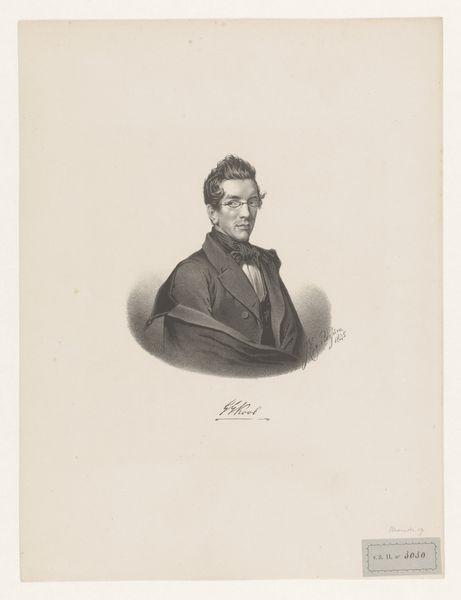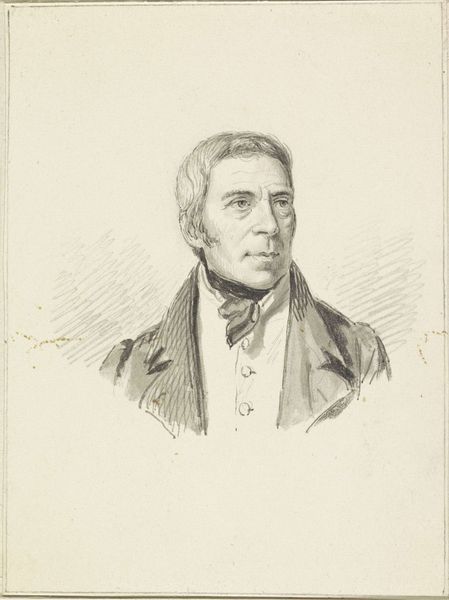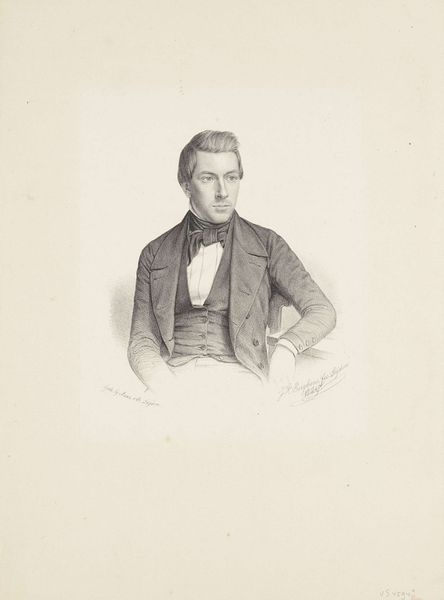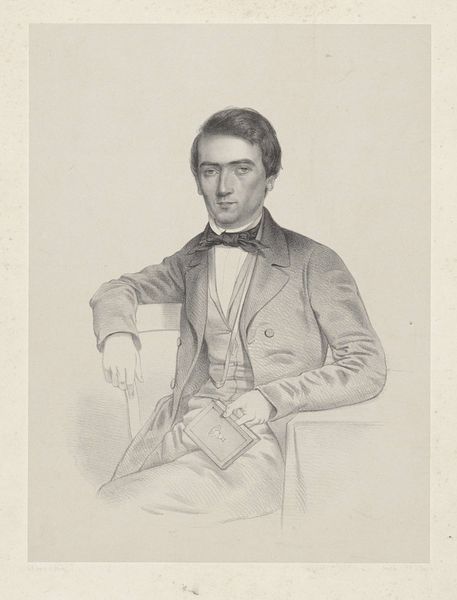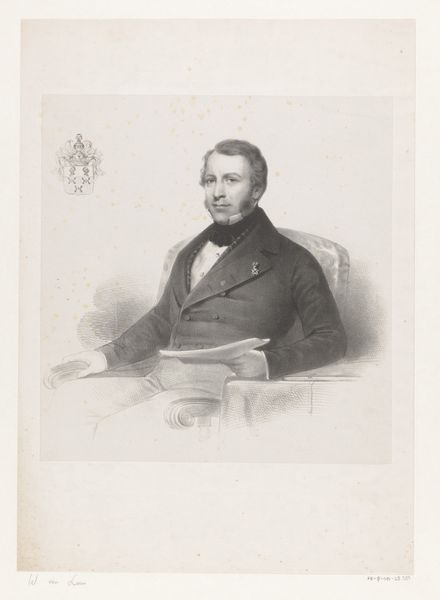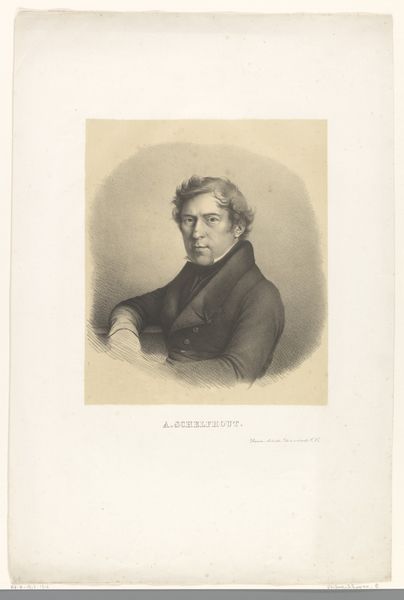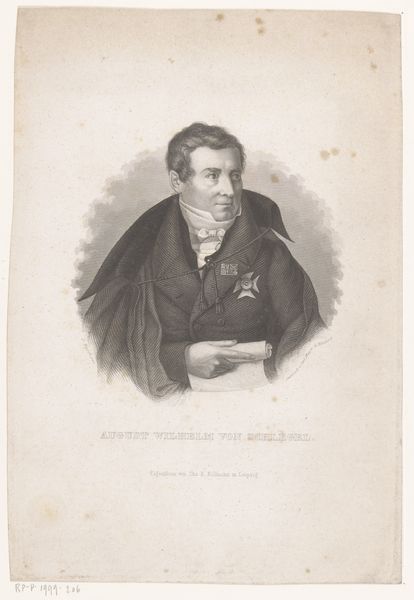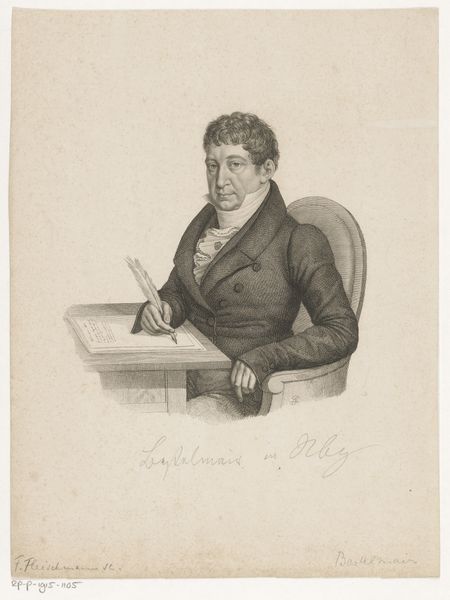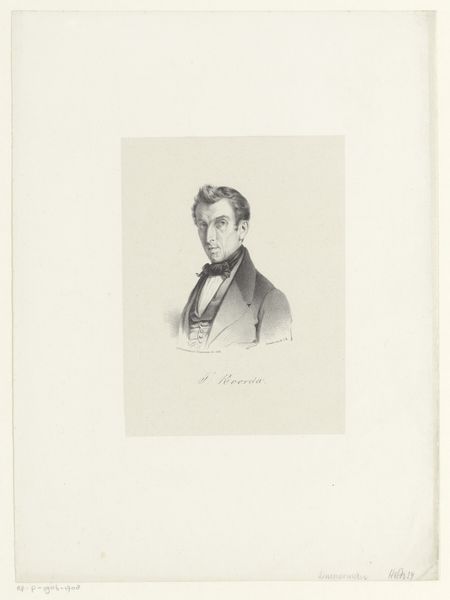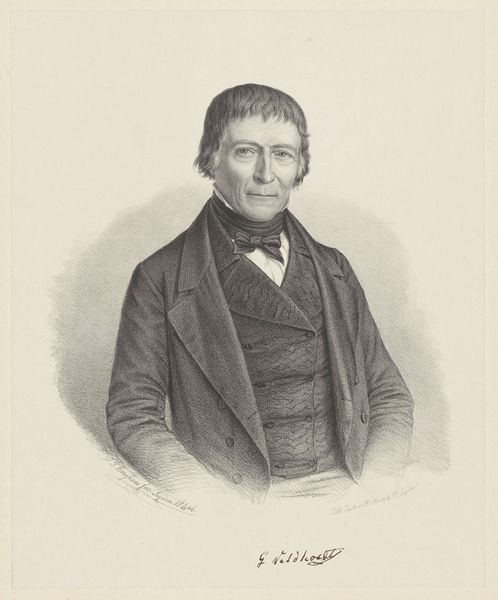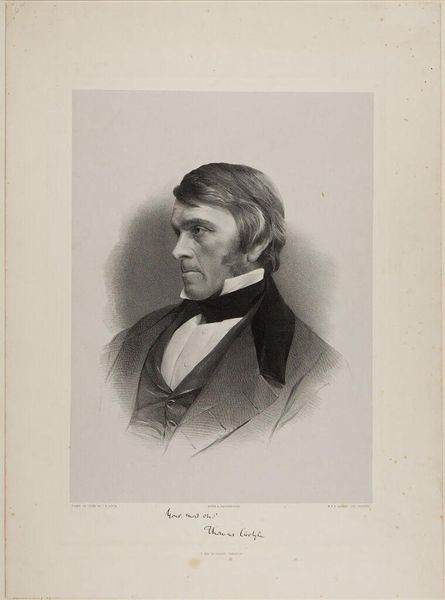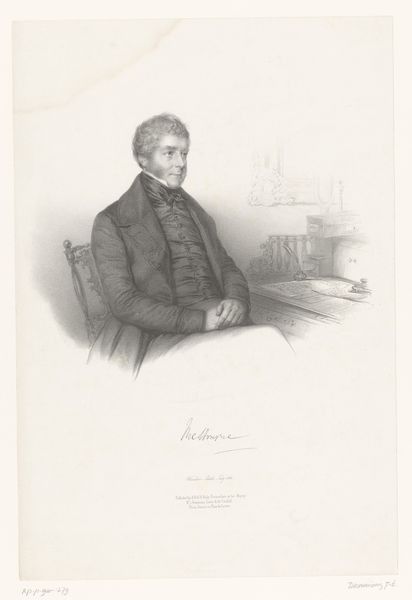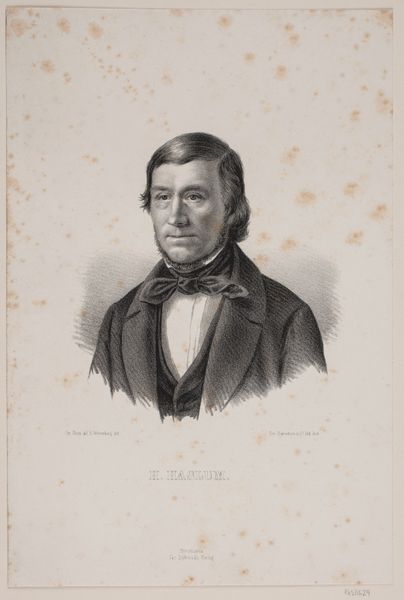
#
portrait
#
neoclacissism
#
16_19th-century
# print
#
realism
Dimensions: height 510 mm, width 377 mm
Copyright: Rijks Museum: Open Domain
Curator: Look at this print, "Portret van Hendrik Rochussen," created between 1827 and 1880 by Franciscus Bernardus Waanders. It resides here at the Rijksmuseum. What are your initial thoughts? Editor: There’s a somber mood evoked by the monochrome palette. The meticulous rendering of the subject’s clothing and the textures create a sense of gravitas. Curator: It's compelling how the print manages to portray Rochussen within a very specific political and social context. Consider the rise of liberalism and nascent industrialization in the Netherlands during this period. How might a portrait like this reinforce certain power structures? Editor: You can see the artist employing a neoclassical structure—note the subject's controlled posture and the chair serving almost like a throne. It underscores ideas of status and formality while adhering to an older established order. How fascinating to observe the contrast in styles at play. Curator: Indeed. And beyond status, I find it interesting to view Rochussen’s gaze as he looks slightly away and is almost avoiding us. Given Rochussen's role as a powerful statesman and his hand in the colonies, what can this portrait tell us about complicity in systems of oppression, even within an enlightened, liberal framework? How does this print both reveal and conceal the weight of his historical position? Editor: That off-center gaze contributes a psychological depth and seems to offer us as viewers a chance to really interpret his emotional space within a rigid format. The restrained palette lends the print a subtle tension between objectivity and the sitter's psychological presence. It's almost dream-like in quality, using the limited palette to its full dramatic potential. Curator: Looking at the man’s rigid, composed pose and thoughtful gesture reminds us of the ways identity can be constructed. Perhaps what feels stilted to our eye was simply how those in power carefully cultivated their images. It serves as an intriguing window onto that period's attitudes around leadership and colonial policies. Editor: Reflecting on Waanders’ choices, I admire the interplay between realism in details like the coat buttons and the softening effect created by the print's texture. Both grant the sitter an air of authority within that very narrow tonal bandwidth. Curator: Analyzing how Waanders depicted this Dutch figure leaves us to really wonder how historical legacies are captured and passed on. It almost urges us to think about art's potential in reflecting, or reinforcing the narratives we want to believe about the past.
Comments
No comments
Be the first to comment and join the conversation on the ultimate creative platform.
